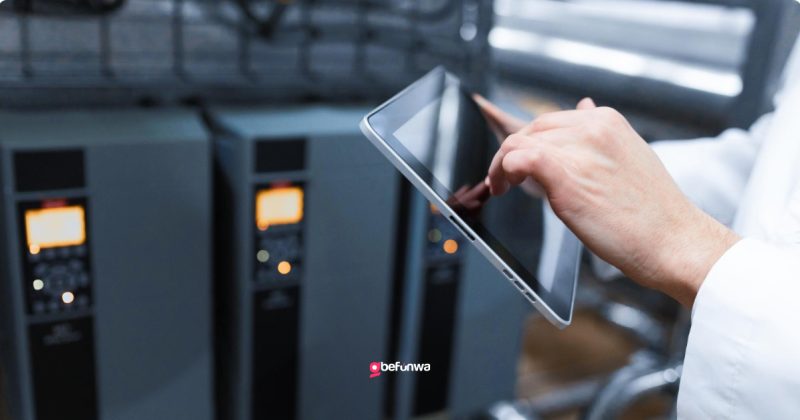
As web development evolves, the need for flexible, scalable, and dynamic content management solutions grows. Enter the concept of the headless CMS—where the content management system (CMS) and the front-end presentation layer are decoupled, allowing developers to use any technology stack for the front-end while leveraging a CMS’s powerful content management capabilities. WordPress, traditionally seen as a monolithic CMS, can also be adapted into a headless CMS. This article explores how to use WordPress to create a headless CMS, covering the benefits, the necessary steps, and key considerations.
A headless CMS is a content management system where the back-end (content creation and management) is separated from the front-end (presentation layer). The “head” (front-end) is “cut off,” allowing developers to use any front-end technology to display content, such as React, Angular, Vue.js, or even mobile applications.In a headless CMS architecture, content is accessed via APIs (Application Programming Interfaces), which serve as the intermediary between the back-end and front-end. This decoupled approach provides greater flexibility, scalability, and the ability to deliver content across various platforms and devices.
1. Flexibility in Front-End Development: By decoupling the front-end, developers can use modern JavaScript frameworks and libraries or even native mobile technologies, offering more control over the user experience and performance.
2. Improved Performance: A headless CMS can improve site speed and performance by offloading the rendering process to a dedicated front-end technology stack optimized for user interactions.
3. Multi-Channel Content Delivery: With a headless CMS, you can serve the same content across multiple channels, including websites, mobile apps, IoT devices, and more, ensuring consistency and broad reach.
4. Enhanced Security: Separating the content management system from the public-facing front-end can reduce the attack surface, as the back-end is not directly exposed to the internet.
5. Scalability: A headless architecture allows for easier scaling, as you can independently scale the back-end and front-end components based on demand.
The first step is to set up a standard WordPress installation. This involves choosing a hosting provider, installing WordPress, and configuring essential settings. For a headless setup, you can opt for a minimal installation, focusing only on necessary features and plugins.
To use WordPress as a headless CMS, you need a way to access content programmatically. WordPress offers a REST API out-of-the-box, which provides endpoints for retrieving and manipulating content. Additionally, you can use GraphQL, a query language for APIs that offers more flexibility in requesting data.
One of the advantages of WordPress is its support for custom post types and custom fields. This allows you to structure content beyond the default posts and pages. For example, you can create custom post types for products, events, or testimonials.
Since the front-end presentation will be handled by a separate application, you can disable the WordPress theme and other front-end outputs. This can be done by:
With the back-end ready, the next step is to build the front-end application using your chosen technology stack. Popular choices include:
The front-end application will communicate with the WordPress back-end through the REST API or GraphQL to fetch and display content.
For secure data access and content management, you need to implement authentication and authorization mechanisms. Common methods include:
A headless setup can significantly improve performance, but you should still optimize both the back-end and front-end:
1. Content Preview: In a headless setup, providing content previews can be challenging. Consider integrating a preview mode in your front-end application that fetches draft content from WordPress.
2. SEO: Ensure your headless setup supports SEO best practices. This includes generating accurate meta tags, open graph data, and sitemaps.
3. Analytics and Tracking: Implement analytics and tracking on the front-end to monitor user behavior, as traditional WordPress plugins for these purposes may not be applicable.
4. Maintenance and Updates: Keep both the WordPress back-end and the front-end application updated with the latest security patches and feature updates.
Using WordPress as a headless CMS offers a modern, flexible approach to content management and presentation. By decoupling the back-end and front-end, you gain the freedom to choose the best technologies for each layer, improve performance, and deliver content across multiple platforms. While setting up a headless CMS involves several steps and considerations, the benefits in terms of scalability, security, and user experience make it a compelling choice for many projects. Whether you’re building a complex web application or a simple blog with a dynamic front-end, a headless WordPress setup can provide the foundation you need for a robust and versatile digital presence.
Deborah Oludimu is an experienced content writer with 3+ years of experience. She is skilled in research, writing, and editing to produce high-quality, engaging content across industries. Deborah is passionate about creating content that informs and inspires
© 2026 GBEFUNWA.COM. All rights reserved.
The WordPress® trademarks are the intellectual property of the WordPress Foundation, and the Woo® and WooCommerce® trademarks are the intellectual property of WooCommerce, Inc. Uses of the WordPress®, Woo®, and WooCommerce® names in this website are for identification purposes only and do not imply an endorsement by WordPress Foundation or WooCommerce, Inc. gbefunwa is not endorsed or owned by, or affiliated with, the WordPress Foundation or WooCommerce, Inc.